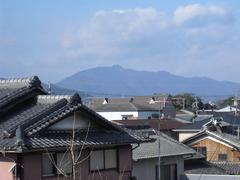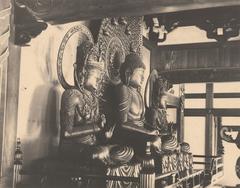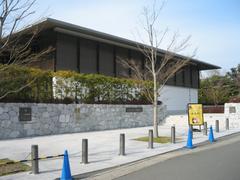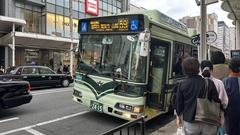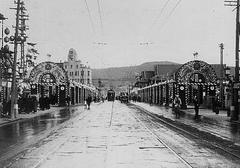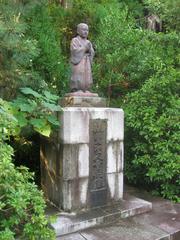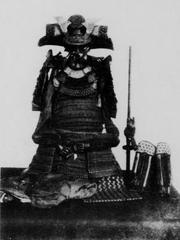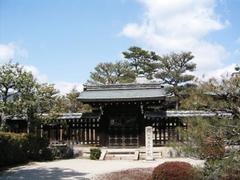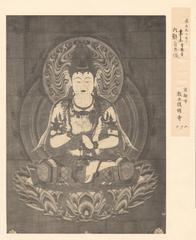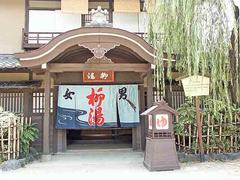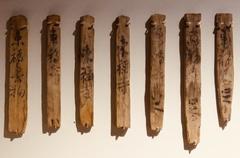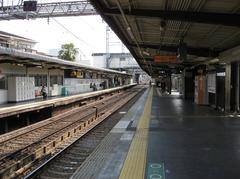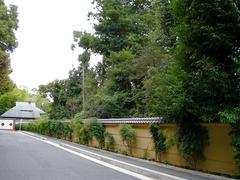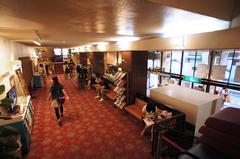
Nishiki Market Kyoto: Visiting Hours, Tickets & Guide to Historical Sites
Date: 04/07/2025
Introduction to Nishiki Market Kyoto
Nestled in the vibrant heart of Kyoto, Nishiki Market stands as an enduring symbol of the city’s rich culinary heritage and cultural tapestry. Affectionately known as “Kyoto’s Kitchen,” this bustling marketplace stretches for approximately 400 meters along Nishikikoji Street and is home to over 130 shops and stalls. Visitors can expect an immersive journey through centuries-old food traditions, artisanal craftsmanship, and seasonal delicacies. Established during the early 17th century Edo period, Nishiki Market began as a wholesale fish market serving imperial kitchens and local restaurants, gradually expanding to showcase Kyoto specialties like pickled vegetables, yuba (tofu skin), and traditional sweets (Kyoto Nishiki Official; Japan Guide).
Today, Nishiki Market is a living heritage site where family-run businesses are passed down through generations, blending time-honored recipes with modern innovations. Visitors can explore a covered arcade lined with vibrant stalls, sample fresh seafood and Kyoto vegetables, and engage with passionate vendors who embody the spirit of “omotenashi” — Japanese hospitality (Slow Travel News; Visit Inside Japan).
Open daily from 9:00 AM to 6:00 PM with free entry, Nishiki Market is easily accessible via Shijo and Karasuma subway stations. Its central location makes it an essential stop for anyone eager to discover authentic Kyoto flavors and culture. Beyond food, it serves as a vibrant social hub, hosting seasonal events and sitting near historic landmarks such as Nishiki Tenmangu Shrine and Nijo Castle, offering a comprehensive cultural itinerary (Tickets in Japan; The IntroverTraveler).
Table of Contents
- Origins and Historical Evolution
- Visiting Hours & Ticket Information
- Getting There & Accessibility
- Culinary Heritage & Market Atmosphere
- Must-Try Foods & Culinary Experiences
- Market Layout & Shopping Guide
- Etiquette & Practical Tips
- Nearby Attractions & Kyoto Historical Sites
- Responsible Tourism Practices
- Frequently Asked Questions (FAQ)
- Conclusion & Recommendations
- Sources
Origins and Historical Evolution
Nishiki Market’s roots extend over 400 years to the early Edo period. Officially established in 1615 when the Edo shogunate recognized Nishiki-no-tana as a fish wholesaler, the market’s abundant groundwater ensured a steady supply of fresh fish for imperial and local kitchens. Over time, Nishiki expanded to include vegetables, pickles, tofu, and other Kyoto cuisine staples, evolving into a bustling hub of commerce and social activity (Kyoto Nishiki Official; Lonely Planet).
During the Meiji and Taisho eras, Nishiki adapted to tourism by introducing modern products alongside traditional fare. After World War II, the market embraced international influences while preserving its historical character (Kyoto Luxury Vacation Homes). Today, many shops remain family-run, preserving techniques and recipes passed down through generations (Kyoto Travel Info; Japan Highlights).
Visiting Hours & Ticket Information
- Opening Hours: 9:00 AM – 6:00 PM daily. Individual shop hours may vary; some close on Wednesdays or Sundays. Check ahead for specific vendors (Tickets in Japan).
- Tickets: Entry is free; no admission fee or ticket required.
- Best Time to Visit: Weekday mornings for fewer crowds and the freshest offerings (TravelSetu).
Getting There & Accessibility
Nishiki Market is centrally located and easily reached by public transport:
- Subway: Shijo Station (Karasuma Line) or Karasuma Station (Hankyu Line), both within a 5-minute walk.
- Bus: Multiple Kyoto city buses stop nearby.
- On Foot: About 20 minutes from Kyoto Station.
The market’s covered arcade is flat and well-maintained, but narrow aisles can become crowded. Wheelchair and stroller access is possible, though navigation may be challenging during peak hours (Slow Travel News).
Culinary Heritage & Market Atmosphere
Nishiki Market is a cornerstone of Kyoto’s culinary tradition. Vendors specialize in iconic ingredients like yuba, hamo (pike conger eel), Kyo-yasai (heirloom vegetables), and seasonal produce (Kyoto Nishiki Official). The market’s emphasis on seasonality and freshness reflects Kyoto’s gastronomic philosophy. Many shops focus on single products—tsukemono (pickled vegetables), mochi, or dried seafood—demonstrating masterful craftsmanship (Visit Inside Japan).
The atmosphere is lively and sensory-rich, filled with the aromas of grilling yakitori, colorful displays of produce, and the sounds of bustling shoppers and friendly vendors. Traditional noren curtains, lanterns, and wooden facades preserve the market’s timeless ambiance (Jetset Seeker).
Must-Try Foods & Culinary Experiences
Signature Street Foods
- Takoyaki (Octopus Balls): Savory balls with diced octopus, topped with sauce and bonito flakes (Japan Journeys).
- Soy Milk Donuts: Light, fluffy, and subtly sweet, these plant-based treats are a market favorite (Japan Wonder Travel).
- Tamagoyaki (Japanese Omelette): Sweet, layered omelette, freshly prepared and served on a stick (Agoda).
- Mochi & Wagashi: Artistic seasonal sweets filled with bean paste or fruit.
- Yakitori: Grilled chicken skewers, a smoky and savory snack (Agoda).
Seasonal & Regional Specialties
- Spring: Bamboo shoots (takenoko), sakura-flavored sweets.
- Summer: Unagi (grilled eel), chilled somen noodles.
- Autumn: Roasted chestnuts, matsutake mushrooms, sweet potato wagashi.
- Winter: Oden stew, yudofu (hot tofu).
Unique Experiences
- Pickled Vegetables (Tsukemono): Free tastings and demonstrations of traditional pickling methods (Agoda).
- Fresh Seafood & Sashimi: Sample sashimi-grade seafood, uni, and grilled river fish.
- Yuba (Tofu Skin): Enjoyed fresh or in prepared dishes (Japan Wonder Travel).
- Matcha Products: Matcha ice cream, cakes, and sweets abound.
Engage with family-run vendors for a deeper appreciation of Kyoto’s culinary traditions (Agoda).
Market Layout & Shopping Guide
Structure & Orientation
Nishiki Market runs for about 400 meters through five city blocks, parallel to Shijō Street. Shops are generally grouped by specialty—seafood and produce near Teramachi, prepared foods and kitchenware further east (Japan Guide; Slow Travel News). The narrow, covered arcade creates an intimate, bustling environment.
Shopping Tips
- Payment: Cash is preferred; some vendors accept cards or digital payments.
- Sampling: Many stalls offer samples; try snack-sized portions to taste more varieties.
- Souvenirs: Kitchenware, knives, ceramics, textiles, and locally brewed sake make excellent gifts.
- Photography: Always ask before photographing vendors or products (Slow Travel News).
Etiquette & Practical Tips
- Eating While Walking: Discouraged; eat at designated areas or near the stall.
- Trash: Carry your own bag for rubbish; public bins are scarce.
- Language: Limited English signage; gestures and patience go a long way.
- Crowds: Visit on weekday mornings to avoid congestion.
- Foot Traffic: Keep to the left and avoid blocking aisles.
- Behavior: Be courteous, speak quietly, and respect local customs.
Nearby Attractions & Kyoto Historical Sites
Nishiki Market is close to several of Kyoto’s most famous cultural landmarks:
- Nijo Castle: UNESCO World Heritage Site, samurai-era architecture.
- Gion District: Traditional teahouses and geisha culture.
- Kyoto Imperial Palace: Historic residence of the imperial family.
- Nishiki Tenmangu Shrine: Dedicated to the god of education, adjacent to the market.
Combine your market visit with these sites for a richer Kyoto experience (TravelSetu).
Responsible Tourism Practices
- Support Family-Run Businesses: Prioritize traditional, local vendors.
- Buy Seasonal & Local: Reduces environmental footprint.
- Minimize Waste: Refuse unnecessary packaging and use reusable bags.
- Cultural Sensitivity: Dress modestly near shrines, learn basic Japanese greetings, and respect local customs.
- Accessibility: Market is flat but narrow; plan ahead for strollers or wheelchairs.
- Community Impact: Be considerate of local shoppers and leave positive feedback for vendors (ByFood).
Frequently Asked Questions (FAQ)
Q: Is there an entrance fee or ticket required?
A: No, Nishiki Market is free to enter.
Q: What are the market’s hours?
A: Most shops are open from 9:00 AM to 6:00 PM daily, with some closing on Wednesdays or Sundays.
Q: Is the market wheelchair accessible?
A: The market is generally accessible but narrow aisles can be crowded.
Q: Are guided tours available?
A: Yes, guided food tours and cooking classes are offered by local vendors and agencies.
Q: Can I use credit cards?
A: Most vendors prefer cash; bring yen for convenience.
Q: Is photography allowed?
A: Usually yes, but always ask permission from vendors.
Conclusion & Recommendations
Nishiki Market remains a vibrant testament to Kyoto’s enduring culinary legacy and community spirit. Its free entry, central location, and wealth of traditional foods and crafts make it a must-visit for anyone exploring Kyoto. Arrive early, respect local customs, and support family-run businesses to make the most of your experience.
Plan your visit with the latest information from the official Nishiki Market website and consider using mobile apps like Audiala for personalized recommendations. Pair your market adventure with visits to nearby historical sites for a deeper dive into Kyoto’s heritage.
Sources
- Nishiki Market: A Historic Kyoto Culinary Landmark with Visiting Hours, Tickets, and Travel Tips, 2024, Kyoto Nishiki Official (https://www.kyoto-nishiki.or.jp/en/about/)
- Nishiki Market Kyoto: Visiting Hours, Shopping Guide & Must-See Attractions, 2024, The IntroverTraveler (https://www.theintrovertraveler.com/post/visiting-kyoto-s-nishiki-market-complete-guide)
- Must-Try Foods and Culinary Experiences at Nishiki Market | Visiting Hours, Tickets & Kyoto Historical Sites, 2024, Agoda & Japan Wonder Travel (https://www.agoda.com/travel-guides/japan/kyoto/savor-kyoto-culinary-delights-at-nishiki-market/)
- Nishiki Market Visiting Hours, Tickets, and Essential Tips for Exploring Kyoto’s Historical Food Market, 2024, Tickets in Japan (https://www.ticketsinjapan.com/media/nishiki-market-opening-hours/)
- Slow Travel News, 2024, Cultural Heritage Profile of Nishiki Market (https://slowtravelnews.com/2024/05/28/nishiki-market-cultural-heritage-profile/)
- Visit Inside Japan, 2024, Nishiki Market Food Tour Experience (https://visitinsidejapan.com/restaurants-in-japan/nishiki-market-food-tour-kyoto-local-cuisine-experience/)
- TravelSetu, 2024, Nishiki Market Tourism Guide (https://travelsetu.com/guide/nishiki-market-tourism/best-time-to-visit-nishiki-market)
- ByFood, 2024, Kyoto Nishiki Market Street Food Guide (https://www.byfood.com/blog/kyoto/nishiki-market-street-food-guide)
- Japan Guide, 2024, Nishiki Market Overview (https://www.japan-guide.com/e/e3931.html)
- Tickets in Japan, 2024, Nishiki Market Opening Hours (https://www.ticketsinjapan.com/media/nishiki-market-opening-hours/)

